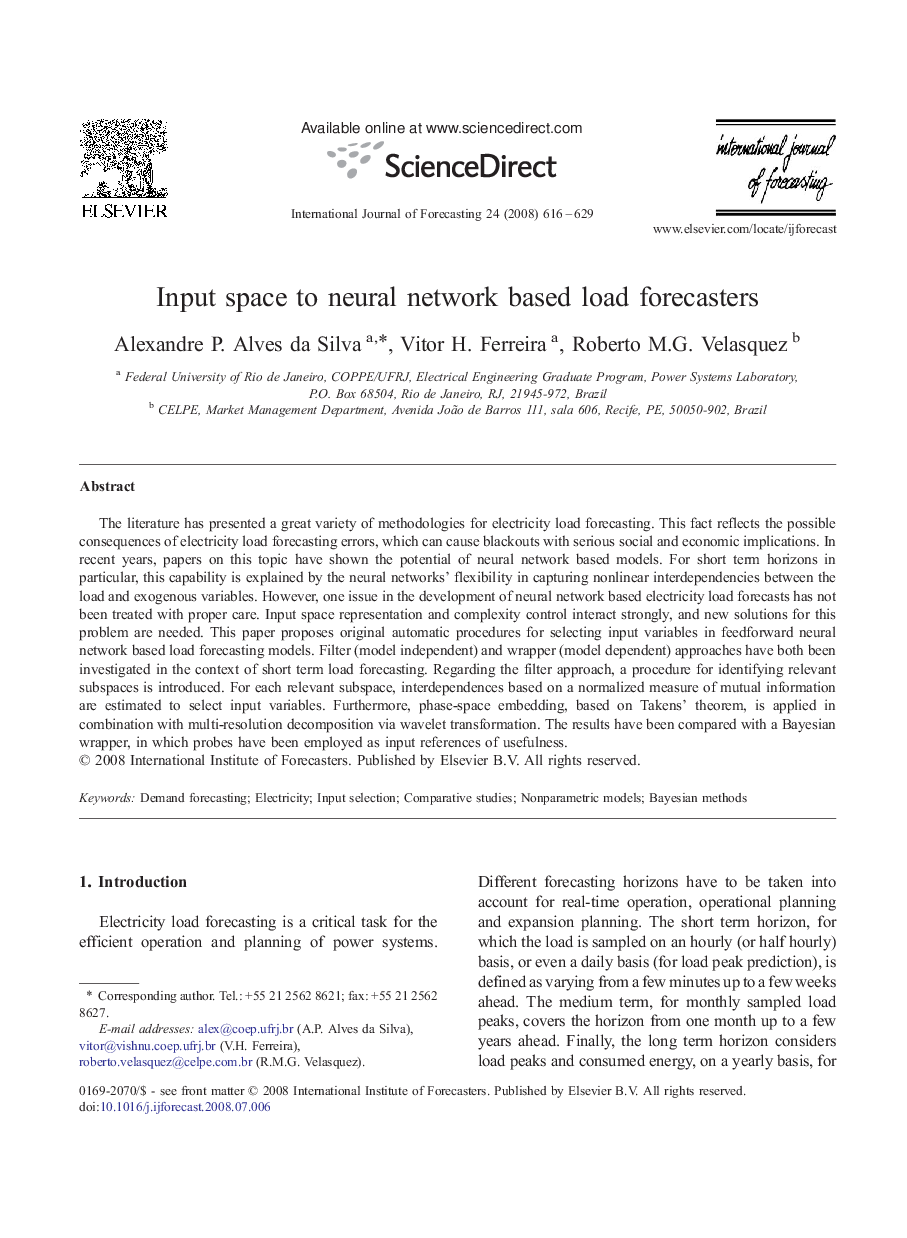| Article ID | Journal | Published Year | Pages | File Type |
|---|---|---|---|---|
| 997746 | International Journal of Forecasting | 2008 | 14 Pages |
The literature has presented a great variety of methodologies for electricity load forecasting. This fact reflects the possible consequences of electricity load forecasting errors, which can cause blackouts with serious social and economic implications. In recent years, papers on this topic have shown the potential of neural network based models. For short term horizons in particular, this capability is explained by the neural networks' flexibility in capturing nonlinear interdependencies between the load and exogenous variables. However, one issue in the development of neural network based electricity load forecasts has not been treated with proper care. Input space representation and complexity control interact strongly, and new solutions for this problem are needed. This paper proposes original automatic procedures for selecting input variables in feedforward neural network based load forecasting models. Filter (model independent) and wrapper (model dependent) approaches have both been investigated in the context of short term load forecasting. Regarding the filter approach, a procedure for identifying relevant subspaces is introduced. For each relevant subspace, interdependences based on a normalized measure of mutual information are estimated to select input variables. Furthermore, phase-space embedding, based on Takens' theorem, is applied in combination with multi-resolution decomposition via wavelet transformation. The results have been compared with a Bayesian wrapper, in which probes have been employed as input references of usefulness.
